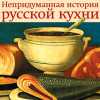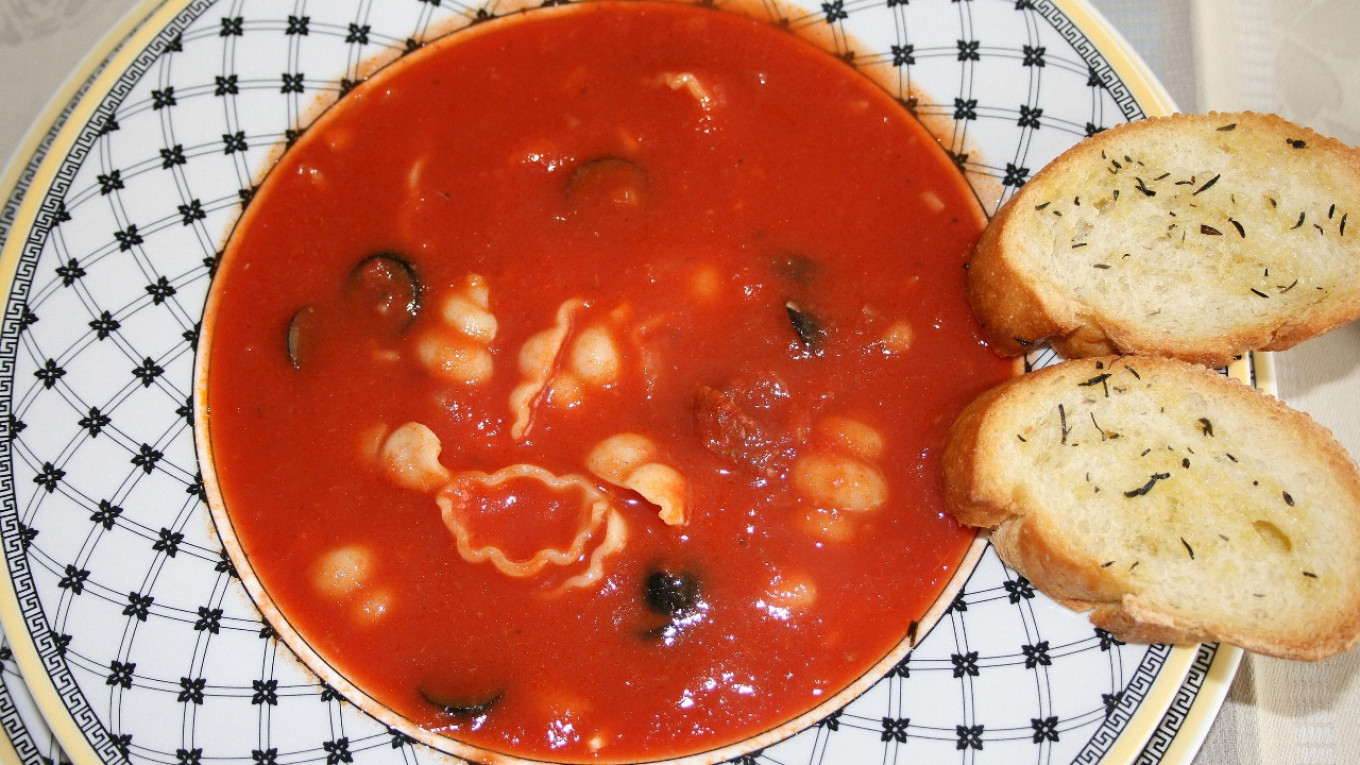Soups have been a mainstay in Russian cuisine for all of recorded history. In other countries young people might skip soup at lunch, but not in Russia. At home or at work, soup is an essential part of the mid-day meal.
So is it any surprise that soups make up the largest number of traditional Russian recipes? We’ll try to explain why.
But before we begin, it’s important to understand how soups in Russia differ from soups in European countries. Throughout history in Russia, the best kind of broth for both shchi (cabbage based soups) and pokhlyobki (vegetable soups) had a high fat content. This was more important than a strong flavor. Recipes for pureed soups are almost always borrowed from abroad — in fact, the word “soup” (суп) only appeared in Russia in the 18th century. When the ingredients include chopped cabbage or mushrooms, this almost always means that it is “authentically Russian.” And it’s almost certainly traditionally Russian if it includes sauerkraut, pickled cucumbers, and other salted vegetables.
Serving soup with sour cream is another a characteristic feature of our cuisine.

In the Soviet period there were no radical changes. The basic historical soup recipes were preserved (shchi, borscht, mushroom soup, noodle soup), and the tradition of modifying old dishes that began in the 19th century continued (for example, kalya turned into rassolnik, which is now usually Leningrad rassolnik).
One new trend in this period was the rapid assimilation of soups from the Union republics, such as kharcho, chikhirtma and shurpa.

Another trend was the use of new food products, such as a greater variety of canned goods (Pacific saury, salmon, pink salmon) and even the processed cheese called “Druzhba.” During that period healthful cooking was also introduced, which included the very popular milk-based soups in their many incarnations.
The variety of soups in Soviet cookery, especially in public eateries, was impressive. The first edition of “The Book of Tasty and Healthy Food” (1939) had 80 soups; in the 1954 edition there were more than a hundred. Among them: broths, bouillon-based soups, clear soups, pureed and milk-based soups and cold soups (based on kvass and boiled beets). And there were even recipes for soups made from berries and fruits.
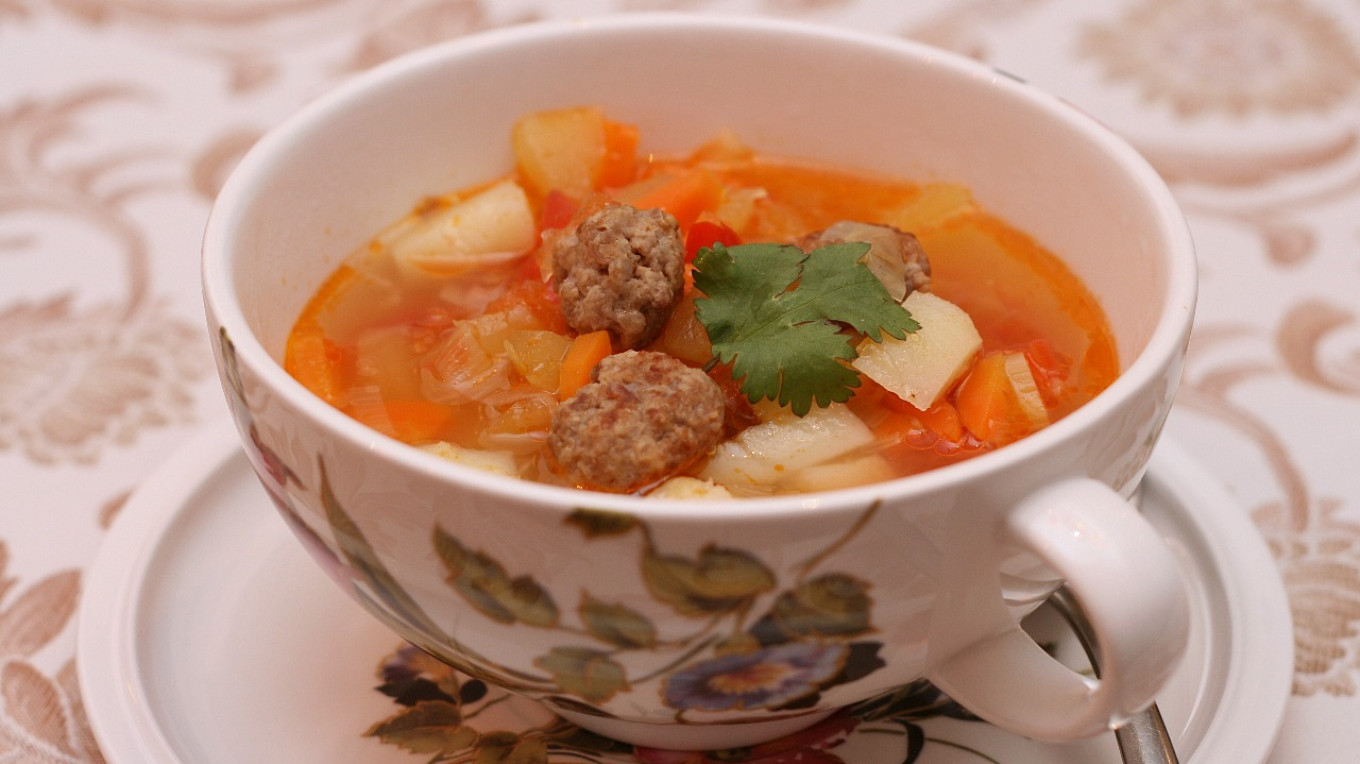
But why are Russians so attached to all these soups? It’s a function of our history and geography. Perhaps each condition or circumstance on its own wasn’t enough to instill our passion for soups. But all together they made us fall in love.
First, we have a cold climate. Most of the year we really want to warm up. Hot vegetable soup with a high fat content is the perfect body warmer. Heat quickly spreads through the body from head to toe and restores strength — especially, to quote a favorite line from a Soviet movie, when it has “giblets on top.”
Second, the Russian diet is different from the European diet. Cheese, wine, seafood, fruit — this is the basis of the Mediterranean diet. There are vegetables and fruits in Russia, too, of course. But many can’t be eaten raw. Turnips aren’t soft to begin with, and if they weren’t able to ripen due to bad weather, even boiling won’t make them edible.
Third, soup-making came out of our techniques to preserve food. Take fish, for example. You can freeze it — but only in late fall and winter. Otherwise, you can dry it or cure it. But chewing on dried or smoked fish all winter is not all that pleasurable. That’s why it’s added to soups where it becomes soft and edible.
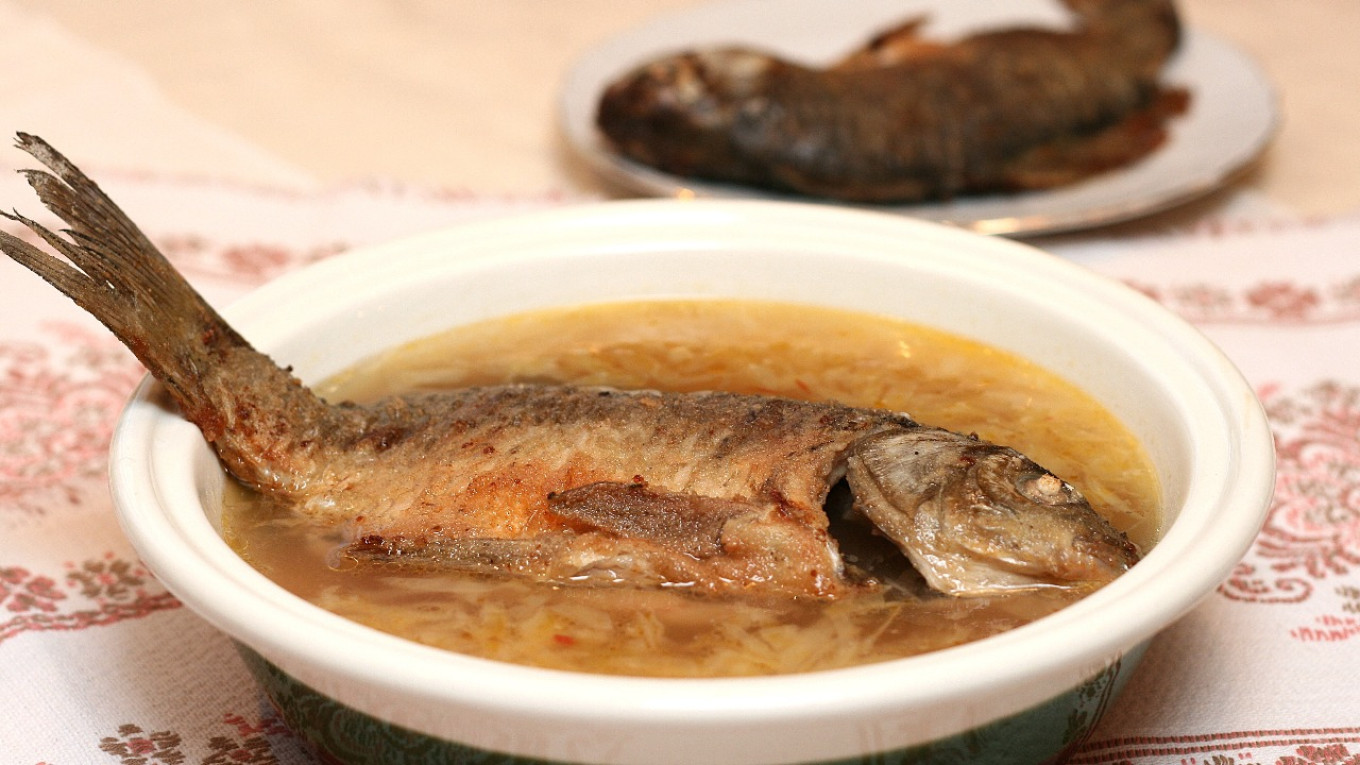
And, finally, soups have been popular in Russia for another reason: the huge amount of dry foodstuffs we eat. Even at the beginning of the 20th century, an urban worker consumed up to one kilogram of bread a day. You need to dip it in something! Porridge, grains and crispbread were a great part of our compatriots’ diet. Maybe that’s why even 100 or 150 years ago the families of peasants and laborers ate soup for lunch as well as for dinner and sometimes even for breakfast.
Soup is part of our heritage. But life doesn’t stay the same, and neither does our cuisine.
There is one more issue about soup — not so much about the recipes as about how it’s served. Today the issue of serving size is controversial. Doctors all agree that soups are very useful and indeed necessary for the daily diet. But few discuss how much is enough and how much is too much. We all remember when grandmothers set before us enormous bowls of borscht. And even though we weren’t little children, we could barely finish them.
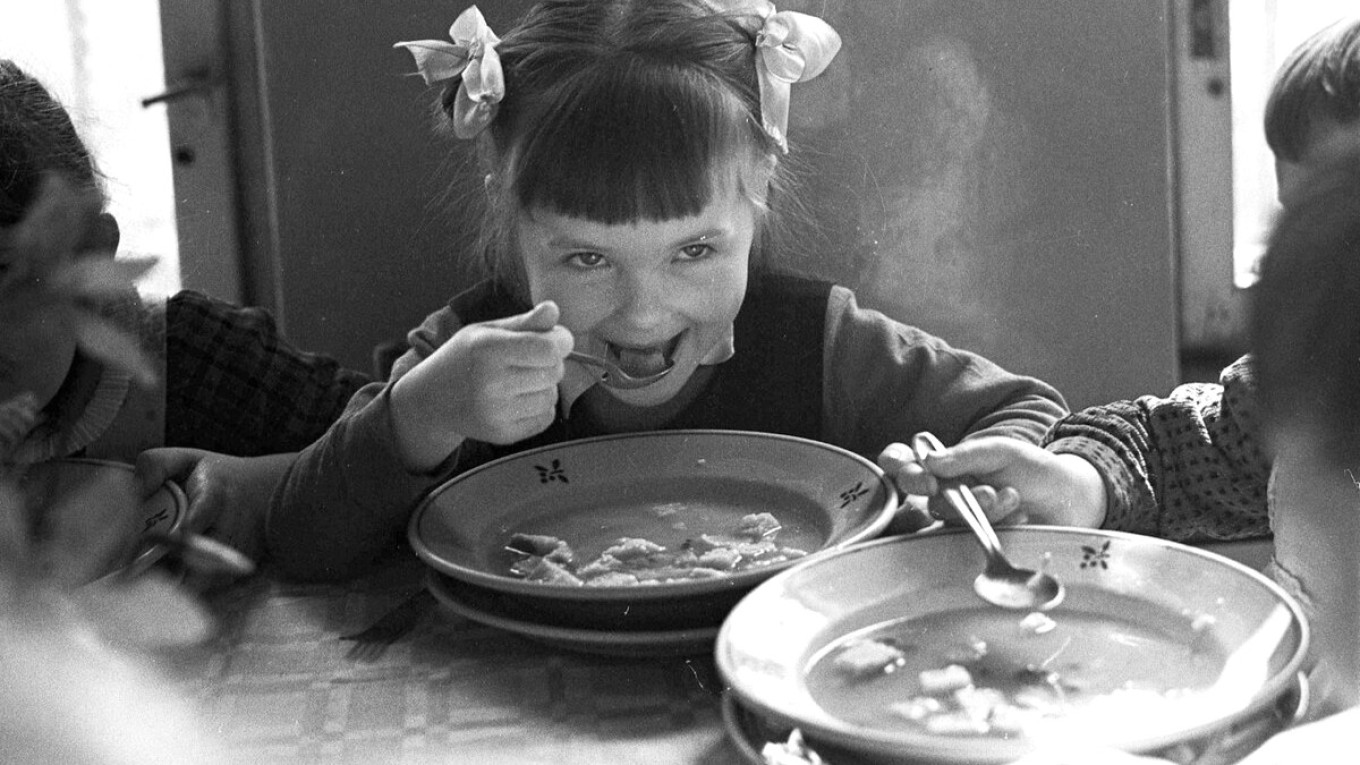
Here, too, there has been evolution, but the Soviet habit of large servings hasn’t changed. Portion sizes have stayed the same as they were in the 1930s — or perhaps in the pre-revolutionary era. Back then large portions were necessary. Someone doing hard physical labor needed to eat a lot of grains, legumes, and fat every day.
Today we obviously don’t need so many calories. And so in the early 1980s the Institute of Nutrition recommended reducing a portion of soup to 200 grams, which is about half of a standard soup bowl. These recommendations were forgotten, but they are worth recalling. After all, a healthy diet is not so much about the abundance and availability of food as it is about reasonable self-restraint.
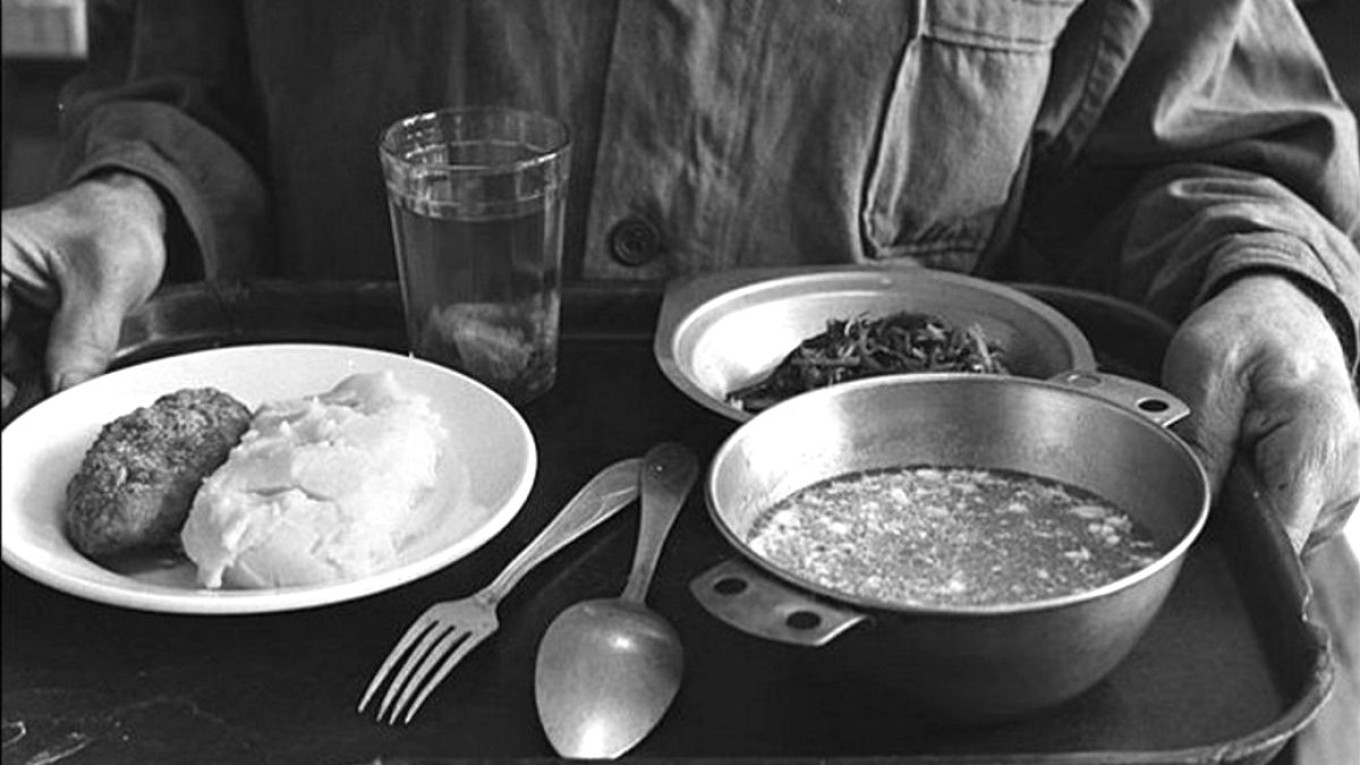
Ah, but sometimes it's hard to resist! Especially when both the color and aroma of soup are calling you to the table. As for color, tomato soup is a surprising chameleon. In day care centers it might be a pale soup with noodles. But it can be a bright red Italian beauty or an icy gazpacho. On a table with grated cheese and croutons, it might be unrecognizable.
Soups based on tomatoes are made all over the world, from Georgia to Mexico or Ukraine to Thailand. Tomato-based soups have been made in Russian cuisine since the second half of the 19th century. Ignaty Radetsky, a giant of Russian cuisine, includes many recipes for tomato soup in his “St. Petersburg Cuisine,” written in 1862. Here is a play on this Russian-Italian cuisine.
Tomato Soup With Croutons
For 4 servings
Ingredients
- 1 can/box (500 g or 1 lb) pureed tomatoes
- ½ liter water
- 1 ½ Tbsp olive oil
- 200 g (7 oz) canned white beans
- 1 red onion
- 2 garlic cloves
- 50 g (1/4 c) dry white wine
- 2 Tbsp sun-dried tomatoes
- 2 Tbsp pitted olives
- 50 g (scant 2 oz) thick short pasta
- salt, pepper to taste
For the toast:
- 4-8 slices of white bread
- 1 Tbsp olive oil
- ½ Tbsp dried thyme
Instructions
- Place the sun-dried tomatoes in a sieve to drain the oil; then dry and slice thinly. Chop the onion and garlic and slice the olives.
- Heat the oil in a saucepan and sauté the onion and garlic for 3 minutes until the onion is lightly golden. Then reduce the heat to medium, carefully pour in the wine and cook for another 3 minutes. There is no need to worry about the alcohol content: the alcohol evaporates entirely when heated and only the flavor of the wine will remain.
- Add the pureed tomatoes and, stirring, heat for 2 minutes; then add the water. Bring to a boil. Add the sundried tomatoes, beans and olives and simmer over a low heat for about 10 minutes.
- Meanwhile, boil the pasta in salted water until half cooked and then add it to the soup. Cook for another 5-7 minutes. Season to taste.
- Toast: Sprinkle olive oil and thyme on bread and put them in and oven preheated to 180C/355°F to toast for 7-10 minutes.
- Serve the soup with warm toast.
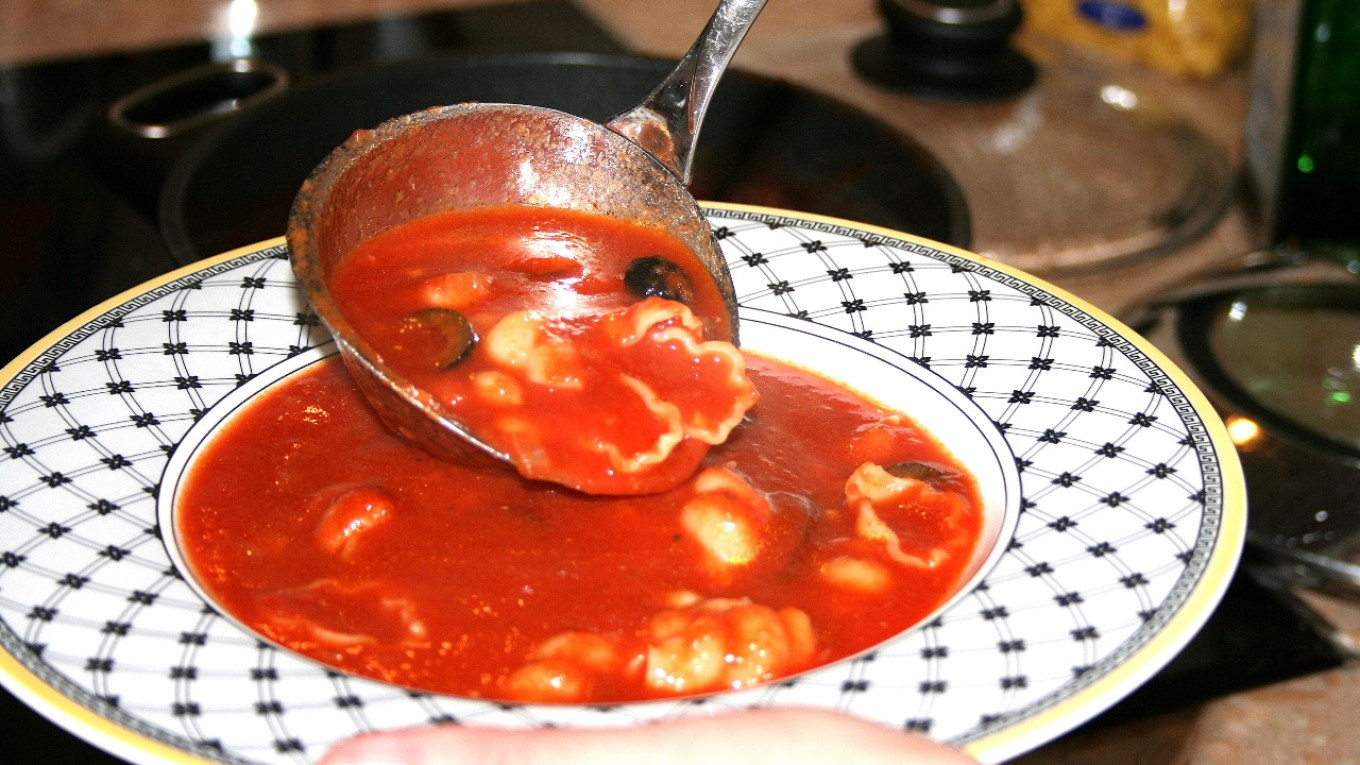
A Message from The Moscow Times:
Dear readers,
We are facing unprecedented challenges. Russia's Prosecutor General's Office has designated The Moscow Times as an "undesirable" organization, criminalizing our work and putting our staff at risk of prosecution. This follows our earlier unjust labeling as a "foreign agent."
These actions are direct attempts to silence independent journalism in Russia. The authorities claim our work "discredits the decisions of the Russian leadership." We see things differently: we strive to provide accurate, unbiased reporting on Russia.
We, the journalists of The Moscow Times, refuse to be silenced. But to continue our work, we need your help.
Your support, no matter how small, makes a world of difference. If you can, please support us monthly starting from just $2. It's quick to set up, and every contribution makes a significant impact.
By supporting The Moscow Times, you're defending open, independent journalism in the face of repression. Thank you for standing with us.
Remind me later.

